Electric cultivator from a washing machine engine
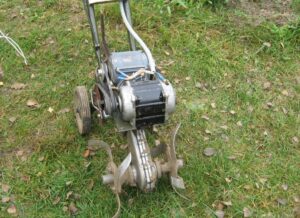 The folk “Kulibins” never cease to amaze Internet users with their imagination, inventing various useful designs from spare parts of old or broken household appliances. Craftsmen also found a use for the washing machine engine, which became the basis for many household appliances. Most of them are simple and primitive; they are constructed quickly, without much effort and expense. However, there are also more complex structures, the assembly of which requires certain skills and abilities. A striking example is an electric cultivator made from a washing machine engine, the assembly instructions for which are presented below.
The folk “Kulibins” never cease to amaze Internet users with their imagination, inventing various useful designs from spare parts of old or broken household appliances. Craftsmen also found a use for the washing machine engine, which became the basis for many household appliances. Most of them are simple and primitive; they are constructed quickly, without much effort and expense. However, there are also more complex structures, the assembly of which requires certain skills and abilities. A striking example is an electric cultivator made from a washing machine engine, the assembly instructions for which are presented below.
What is a homemade cultivator?
Every summer resident knows about the difficulties that arise when cultivating his own garden, especially if its area exceeds the standard 6 acres. The lion's share of worries falls on preparing the soil for planting seedlings and cleaning it at the end of the gardening season. An electric cultivator, which you can make yourself, can greatly simplify this work. The scope of its use is wide and every summer resident will quickly appreciate the benefits provided by such a design.
Before you begin assembling the device, you should familiarize yourself with the types of cultivators, their structure, differences and features, as well as their purpose and operating principle. The devices are: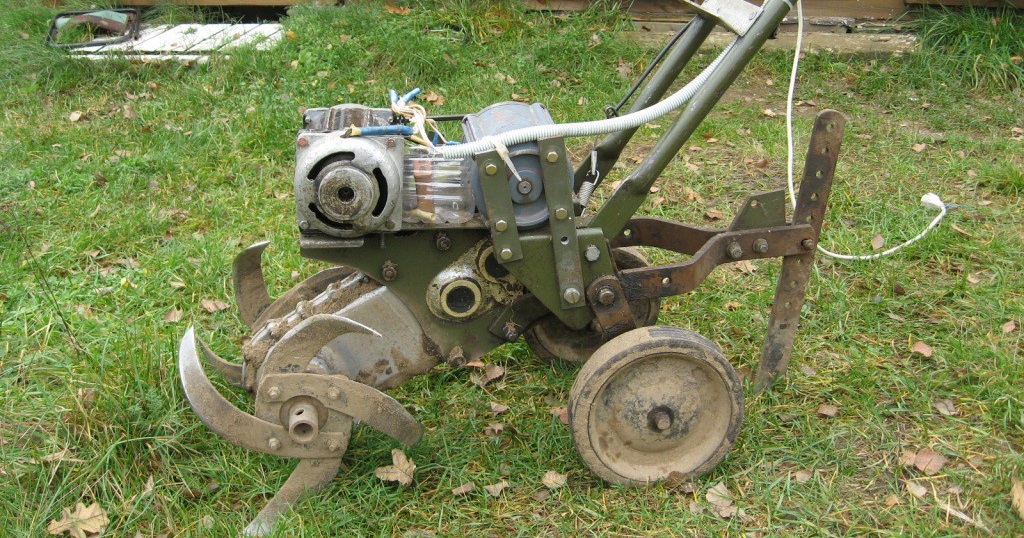
- electric - do not harm the environment, are quite economical, but the possibility of their use is limited by the range of the nearest outlet. Best suited for working in small garden plots;
- fuel - run on gasoline or diesel fuel, are not environmentally friendly equipment, but can be used autonomously.
Since, if there is a non-working washing machine, an electric motor falls into the hands of the home craftsman, it is worth considering assembling an electric cultivator, the operation of which will require access to the electrical network. Its irreplaceability will be appreciated by summer residents and residents of the private sector.
Design and assembly of an electric cultivator
It takes no more than two days to assemble the device, but provided that appropriate preparation has been carried out and all the necessary spare parts are available. To create an electric cultivator with your own hands you will need:
- washing machine motor;
- gearbox;
- “sprockets” and chain (can be removed from a children’s bicycle);
- bearings;
- cultivator blades (you can also prepare it yourself using welding and washing machine springs);
- corners;
- wheels;
- cable (it is advisable to take a wire at least 50 m long);
- a sheet of iron from which the engine protection will be created.
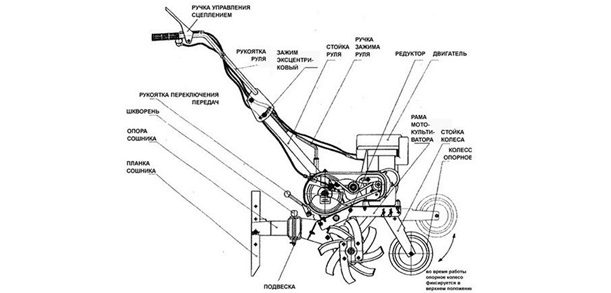
After assembly, the resulting structure will look like a metal frame with wheels on the sides. In the central part there will be a motor connected to the knives by a chain and “sprockets”. It is recommended to make the knives themselves from sharpened and interconnected machine springs, but other material that is on hand will also work. The knives should be placed like this:
- the sharpened part is located on the side of rotation of the shaft;
- the distance between the knives is at least 5 cm;
- angle of location – 120 degrees.
It is recommended to attach the starting mechanism to the handles with which the device will be controlled.
The frame of the device is made only after connecting the main internal parts of the cultivator, but if you make a protective system in advance, you may not guess with the dimensions.
The gearbox, on whose output shaft the blades are already attached, is connected to the transmission mechanism and welded to the engine housing. The latter is attached to the frame using angles, bolts and clamps. An axle holding the wheels is attached to the central axis of the engine. At the end of the assembly, handles are attached to the structure by welding, and an electrical wire and plug are connected.
What is good and what is bad about an electric cultivator?
The design for work on a personal plot, assembled at home, has both advantages and significant disadvantages. The advantages of an electric cultivator include:
- low price: the home inventor can easily find most of the parts in a garage or shed;
- environmental friendliness - all devices powered by electricity do not emit pollutants into the environment;
- self-assembly - knowing how the structure works, its advantages and disadvantages, it will be easy to prevent or eliminate breakdowns;
- possibility of modernization - a self-assembled structure can be easily modified and supplemented with necessary and effective parts that increase its performance.
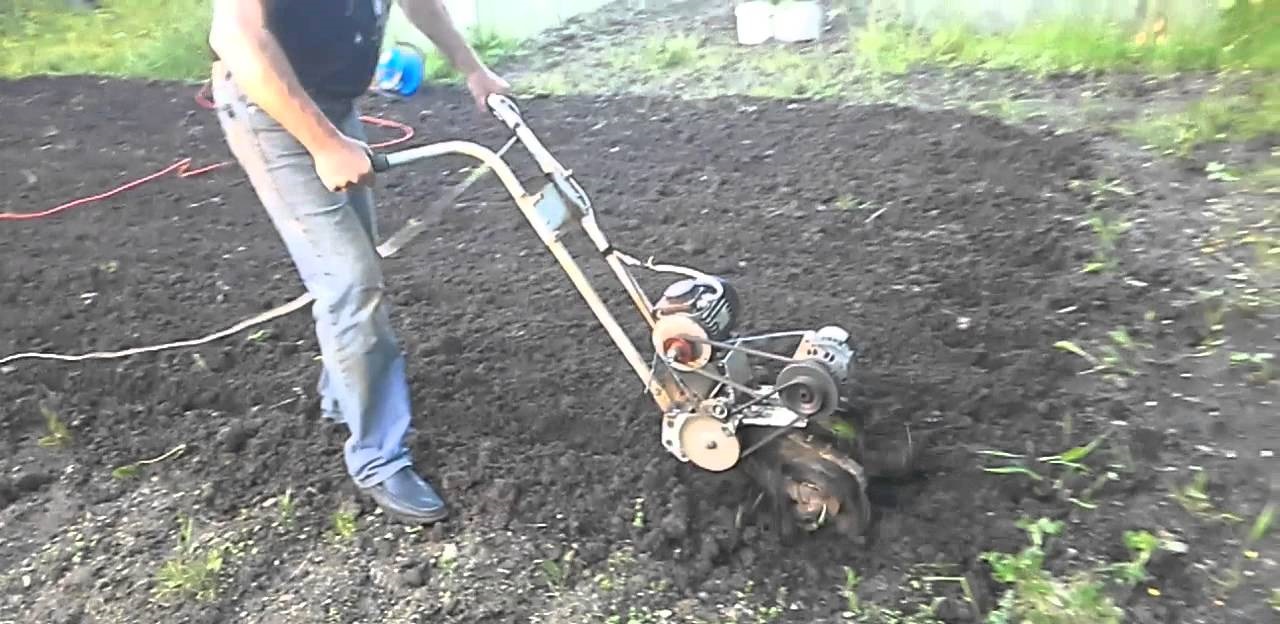
The disadvantages of cultivation equipment created at home according to descriptions and advice from the Internet include:
- lack of necessary skills - the device is quite complex, so its creation requires certain knowledge, skills and appropriate equipment (for example, a welding machine);
- low reliability - like any equipment created without appropriate production equipment, it can be quite dangerous.
The limitation on the processing area can be easily eliminated by extending the cord: you can always purchase an industrial carrying case or make it yourself, calculating the length of the wire so that the electric cultivator can easily reach even the most remote areas of the garden. So, from our point of view, we can easily come to terms with these shortcomings.
Interesting:
Reader comments
- Share your opinion - leave a comment


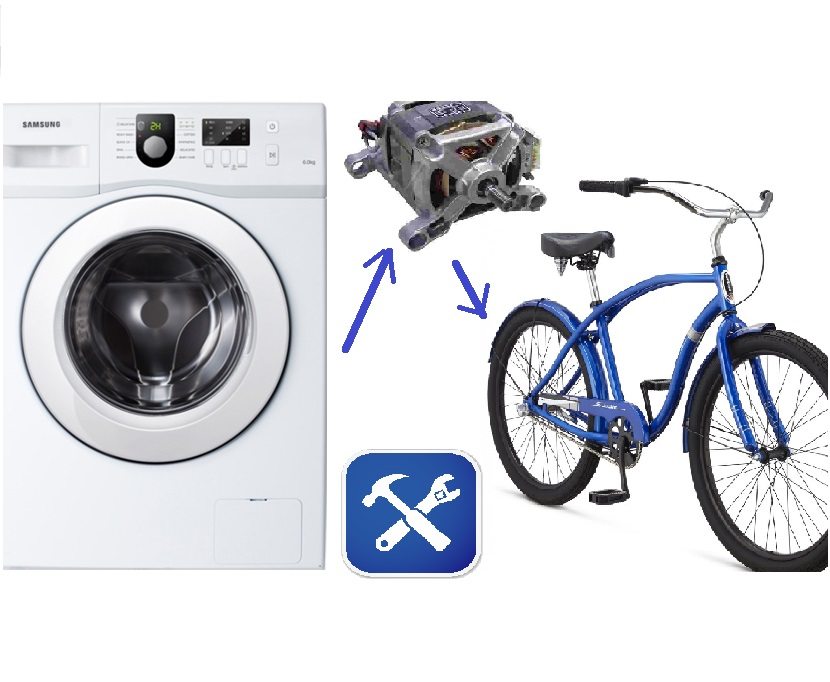

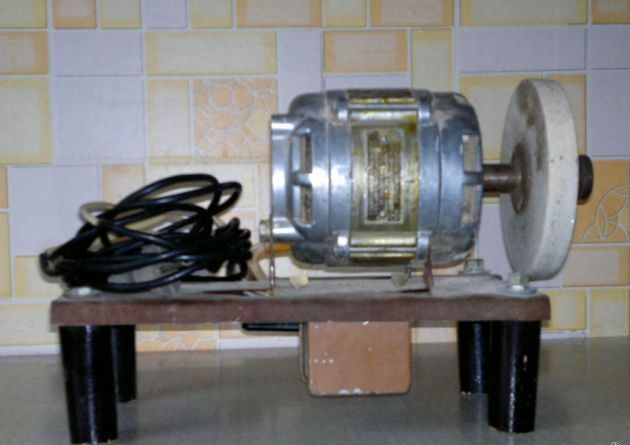
















Add a comment